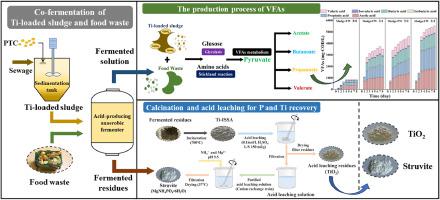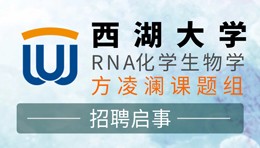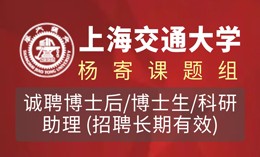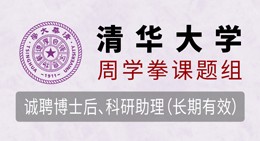当前位置:
X-MOL 学术
›
Water Res.
›
论文详情
Our official English website, www.x-mol.net, welcomes your
feedback! (Note: you will need to create a separate account there.)
Co-fermentation of titanium-flocculated-sludge with food waste towards simultaneous water purification and resource recovery
Water Research ( IF 11.4 ) Pub Date : 2024-01-06 , DOI: 10.1016/j.watres.2024.121110 Jinming Du 1 , Chang Tian 2 , Jianan Xiao 3 , Yuyu Liu 1 , Fenfen Zhang 1 , Xiaomei Gao 1 , Baoshan Xing 4 , Yanxia Zhao 1
Water Research ( IF 11.4 ) Pub Date : 2024-01-06 , DOI: 10.1016/j.watres.2024.121110 Jinming Du 1 , Chang Tian 2 , Jianan Xiao 3 , Yuyu Liu 1 , Fenfen Zhang 1 , Xiaomei Gao 1 , Baoshan Xing 4 , Yanxia Zhao 1
Affiliation

|
Recovery of resources from domestic sewage and food waste has always been an international-thorny problem. Titanium-based flocculation can achieve high-efficient destabilization, quick concentration and separation of organic matter from sewage to sludge. This study proposed co-fermentation of the titanium-flocculated sludge (Ti-loaded sludge) and food waste towards resource recovery by converting organic matter to value-added volatile fatty acids (VFAs) and inorganic matter to struvite and TiO2 nanoparticles. When Ti-loaded sludge and food waste were co-fermented at a mass ratio of 3:1, the VFAs yield reached 3725.2 mg-COD/L (VFAs/SCOD 91.0%), which was more than 4 times higher than the case of the sludge alone. The 48-day semicontinuous co-fermentation demonstrated stable long-term operation, yielding VFAs at 2529.0 mg-COD/L (VFAs/SCOD 89.8%) and achieving a high CODVFAs /NNH4 of 58.9. Food waste provided sufficient organic substrate, enriching plenty of acid-producing fermentation bacteria (such as Prevotella 7 about 21.0% and Bacteroides about 9.4%). Moreover, metagenomic sequencing analysis evidenced the significant increase of the relative gene abundance corresponding to enzymes in pathways, such as extracellular hydrolysis, substrates metabolism, and VFAs biosynthesis. After fermentation, the precious element P (≥ 99.0%) and extra-added element Ti (≥99.0%) retained in fermented residues, without releasing to VFAs supernatant, which facilitated the direct re-use of VFAs as resource. Through simple and commonly used calcination and acid leaching methodologies, 80.9% of element P and 82.1% of element Ti could be successfully recovered as struvite and TiO2 nanoparticles, respectively. This research provides a strategy for the co-utilization of domestic sludge and food waste, which can realize both reduction of sludge and recovery of resources.
中文翻译:

钛絮凝污泥与餐厨垃圾共同发酵,同时实现水净化和资源回收
生活污水和餐厨垃圾资源化一直是国际难题。钛基絮凝可以实现污水到污泥中有机物的高效脱稳、快速浓缩和分离。本研究提出通过将钛絮凝污泥(含钛污泥)和食物垃圾共同发酵,将有机物转化为增值挥发性脂肪酸(VFA),将无机物转化为鸟粪石和二氧化钛纳米粒子,从而实现资源回收。当载钛污泥与餐厨垃圾以3:1的质量比共发酵时,VFAs产率达到3725.2 mg-COD/L(VFAs/SCOD 91.0%),比普通污泥的情况提高了4倍多。单独的污泥。 48天的半连续共发酵表现出稳定的长期运行,VFAs产量为2529.0mg-COD/L(VFAs/SCOD 89.8%),并实现了高达58.9的CODVFAs/NNH4。餐厨垃圾提供了充足的有机底物,富集了大量的产酸发酵菌(如普氏菌7号约21.0%,拟杆菌约9.4%)。此外,宏基因组测序分析证明,细胞外水解、底物代谢和 VFA 生物合成等途径中酶对应的相对基因丰度显着增加。发酵后,珍贵元素P(≥99.0%)和额外添加的元素Ti(≥99.0%)保留在发酵残渣中,没有释放到VFA上清液中,有利于VFA作为资源直接再利用。通过简单且常用的煅烧和酸浸方法,可以分别以鸟粪石和TiO2纳米粒子的形式成功回收80.9%的P元素和82.1%的Ti元素。 该研究为生活污泥与餐厨垃圾的联合利用提供了策略,可实现污泥减量化和资源化。
更新日期:2024-01-06
中文翻译:

钛絮凝污泥与餐厨垃圾共同发酵,同时实现水净化和资源回收
生活污水和餐厨垃圾资源化一直是国际难题。钛基絮凝可以实现污水到污泥中有机物的高效脱稳、快速浓缩和分离。本研究提出通过将钛絮凝污泥(含钛污泥)和食物垃圾共同发酵,将有机物转化为增值挥发性脂肪酸(VFA),将无机物转化为鸟粪石和二氧化钛纳米粒子,从而实现资源回收。当载钛污泥与餐厨垃圾以3:1的质量比共发酵时,VFAs产率达到3725.2 mg-COD/L(VFAs/SCOD 91.0%),比普通污泥的情况提高了4倍多。单独的污泥。 48天的半连续共发酵表现出稳定的长期运行,VFAs产量为2529.0mg-COD/L(VFAs/SCOD 89.8%),并实现了高达58.9的CODVFAs/NNH4。餐厨垃圾提供了充足的有机底物,富集了大量的产酸发酵菌(如普氏菌7号约21.0%,拟杆菌约9.4%)。此外,宏基因组测序分析证明,细胞外水解、底物代谢和 VFA 生物合成等途径中酶对应的相对基因丰度显着增加。发酵后,珍贵元素P(≥99.0%)和额外添加的元素Ti(≥99.0%)保留在发酵残渣中,没有释放到VFA上清液中,有利于VFA作为资源直接再利用。通过简单且常用的煅烧和酸浸方法,可以分别以鸟粪石和TiO2纳米粒子的形式成功回收80.9%的P元素和82.1%的Ti元素。 该研究为生活污泥与餐厨垃圾的联合利用提供了策略,可实现污泥减量化和资源化。































 京公网安备 11010802027423号
京公网安备 11010802027423号